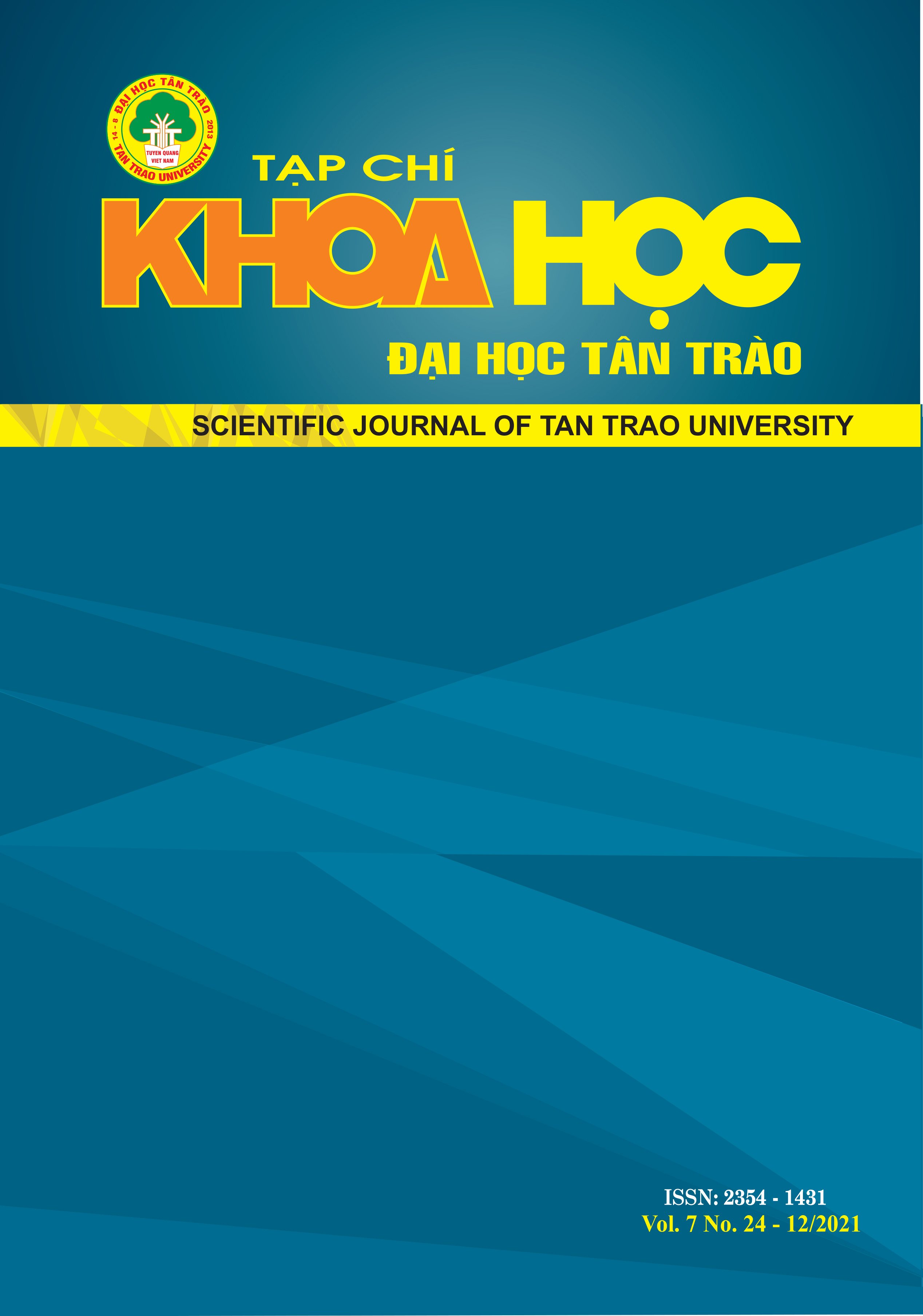PRACTICAL TECHNIQUES OF DANCING AND MUSICAL MOVEMENT FOR 5 - 6 YEARS OLD KINDERGARTEN CHILDREN (A CASE STUDY IN THE KINDER PRACTICE SCHOOL, THUA THIEN HUE COLLEGE OF EDUCATION)
DOI:
https://doi.org/10.51453/2354-1431/2021/651Keywords:
dancing, musical movement, dancing skill, movement, kindergarten childrenAbstract
Dancing and musical movement are important subjects of the musical educational curriculum in the kindergarten. Using our practical experiences during the implementation of the kindergarten teacher training curriculum, we propose novel practical techniques of dancing and musical movement training for the 5 - 6 years old children, aiming at contributing useful documents and techniques for efficient training of children in the kindergarten.
Downloads
References
[1 Denomme, JM & Roy, M (2000), Approaching an interaction education method, Thanh Nien publishing house.
[2] Dai, D.X. (2007), Textbook Dance and educational method of musical movement, Ha Noi publishing house, page 12.
[3] Hoa, P.T. (2009), Textbook Music education method in the kindergarten, College of Education publishing, pages 15, 73-77.
[4] Huong, L.T, Hien, L.T, Hoa, P.T, Duc , L.T. (2007), Organizing integrated music activity for kindergarten children, Education publishing house, pages 12 – 13.
[5] Le, T.T. (2017), Limitation in music education for kindergarten children and solution, Journal of Education, special issue 12/2017, page 71 – 76.
[6] Tri, T.M. (1999), Textbook Dance and music movement education method, Education publishing house, page 8 – 9.
[7] Tuyet, N.A, Mai, N.N, Thoa, D.K. (2014), Kindergarten children psychology, Ha Noi National University publishing house.
Downloads
Published
How to Cite
Issue
Section
License

This work is licensed under a Creative Commons Attribution-ShareAlike 4.0 International License.
All articles published in SJTTU are licensed under a Creative Commons Attribution-ShareAlike 4.0 International (CC BY-SA) license. This means anyone is free to copy, transform, or redistribute articles for any lawful purpose in any medium, provided they give appropriate attribution to the original author(s) and SJTTU, link to the license, indicate if changes were made, and redistribute any derivative work under the same license.
Copyright on articles is retained by the respective author(s), without restrictions. A non-exclusive license is granted to SJTTU to publish the article and identify itself as its original publisher, along with the commercial right to include the article in a hardcopy issue for sale to libraries and individuals.
Although the conditions of the CC BY-SA license don't apply to authors (as the copyright holder of your article, you have no restrictions on your rights), by submitting to SJTTU, authors recognize the rights of readers, and must grant any third party the right to use their article to the extent provided by the license.


